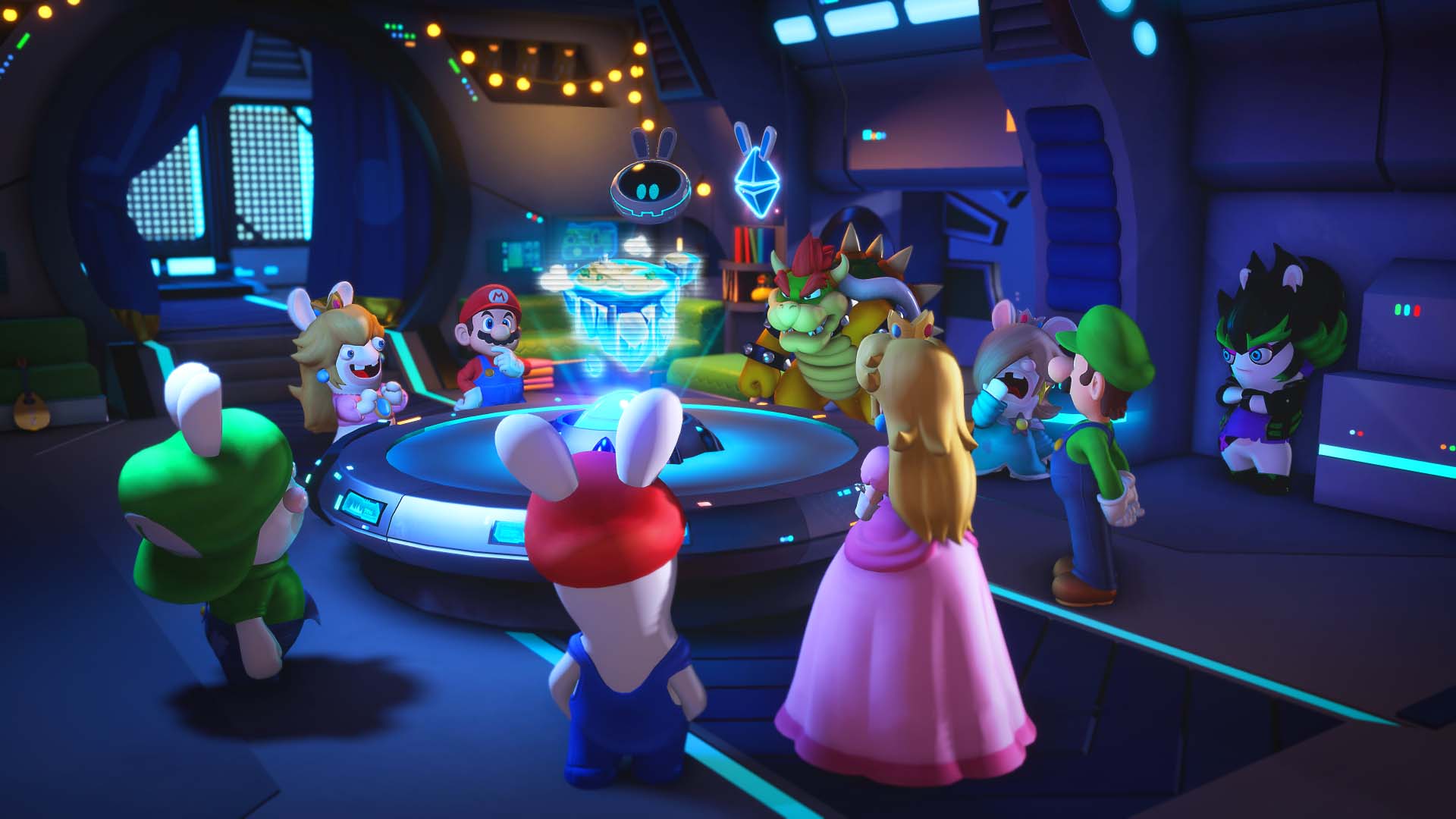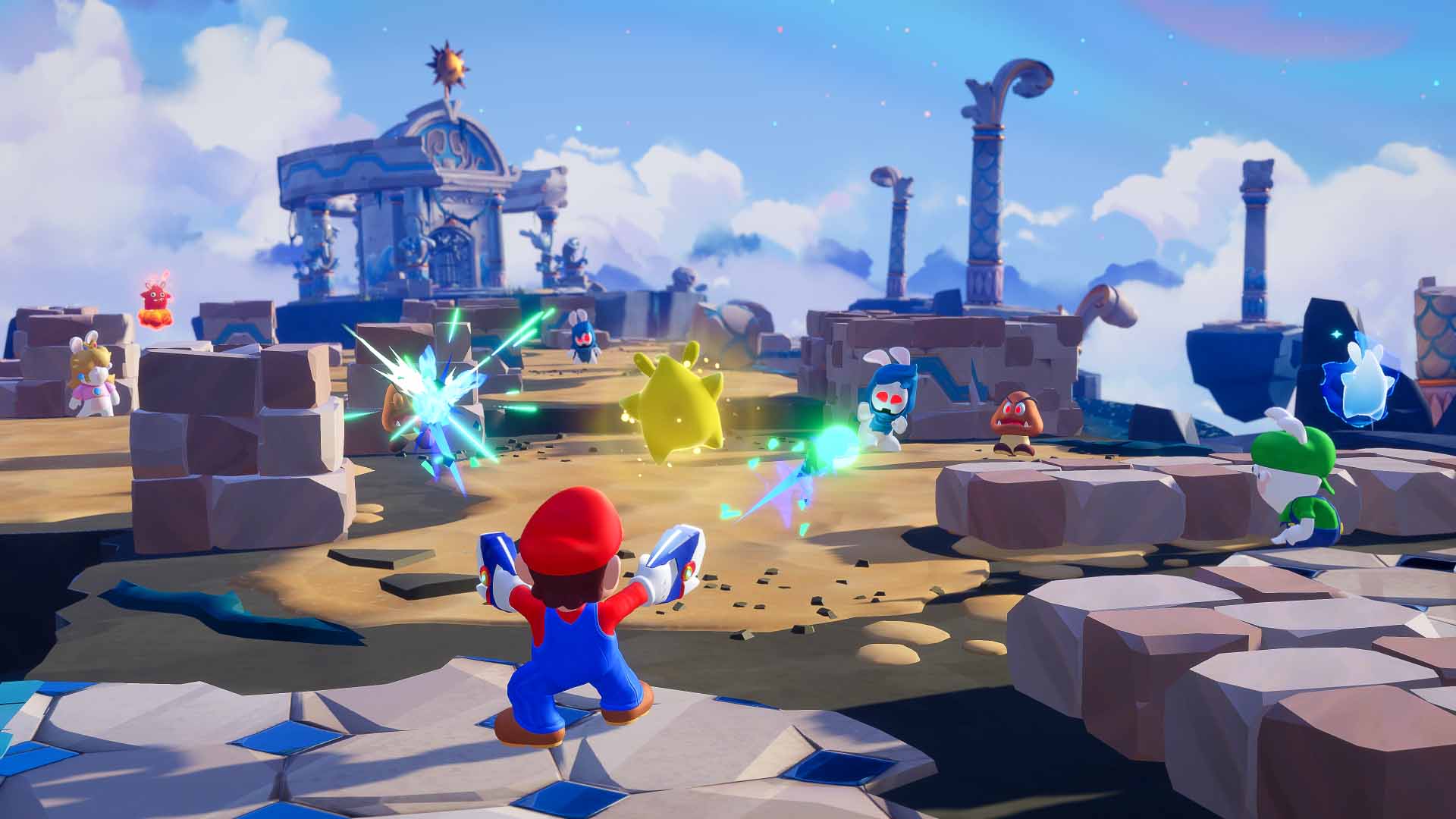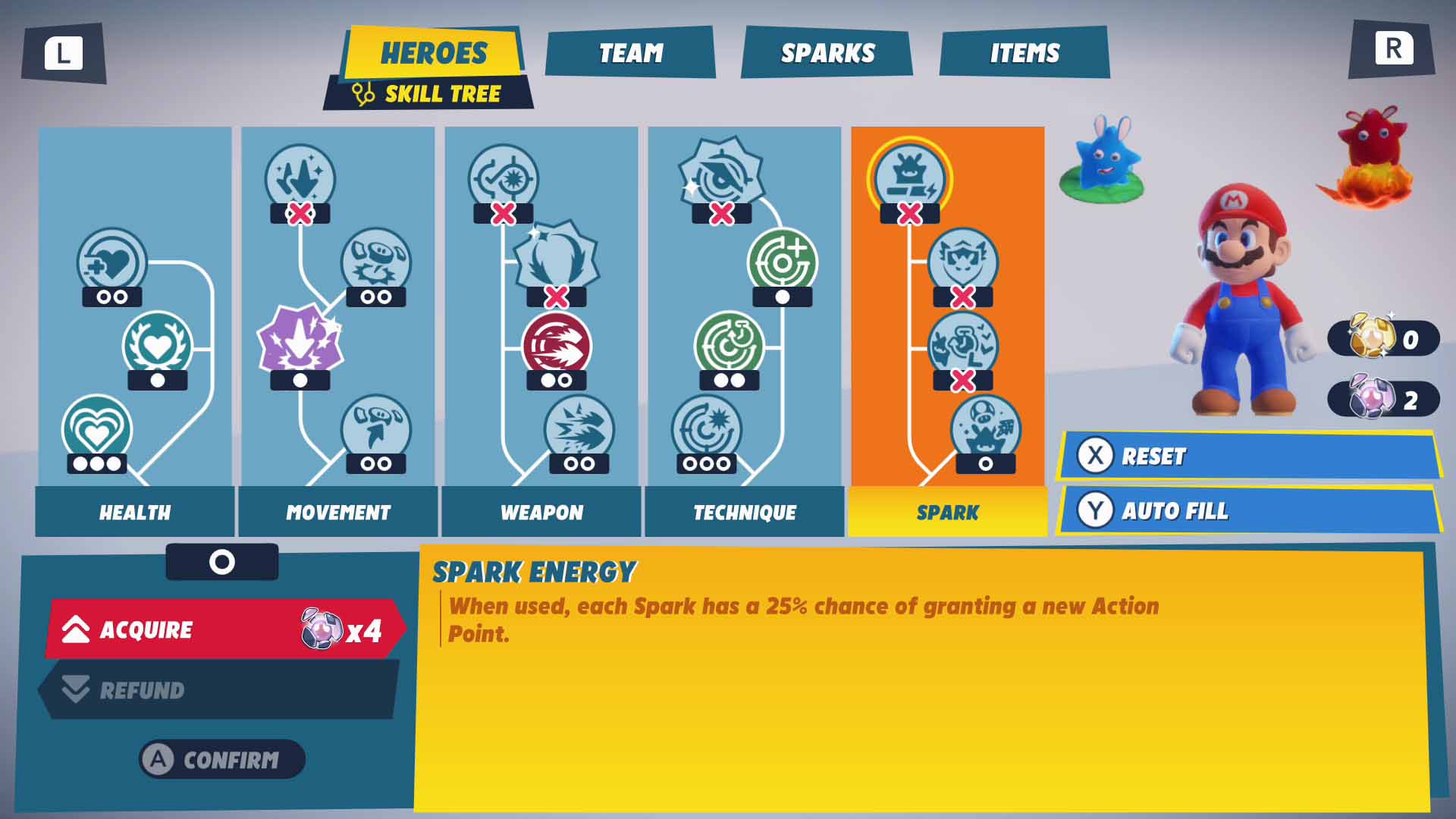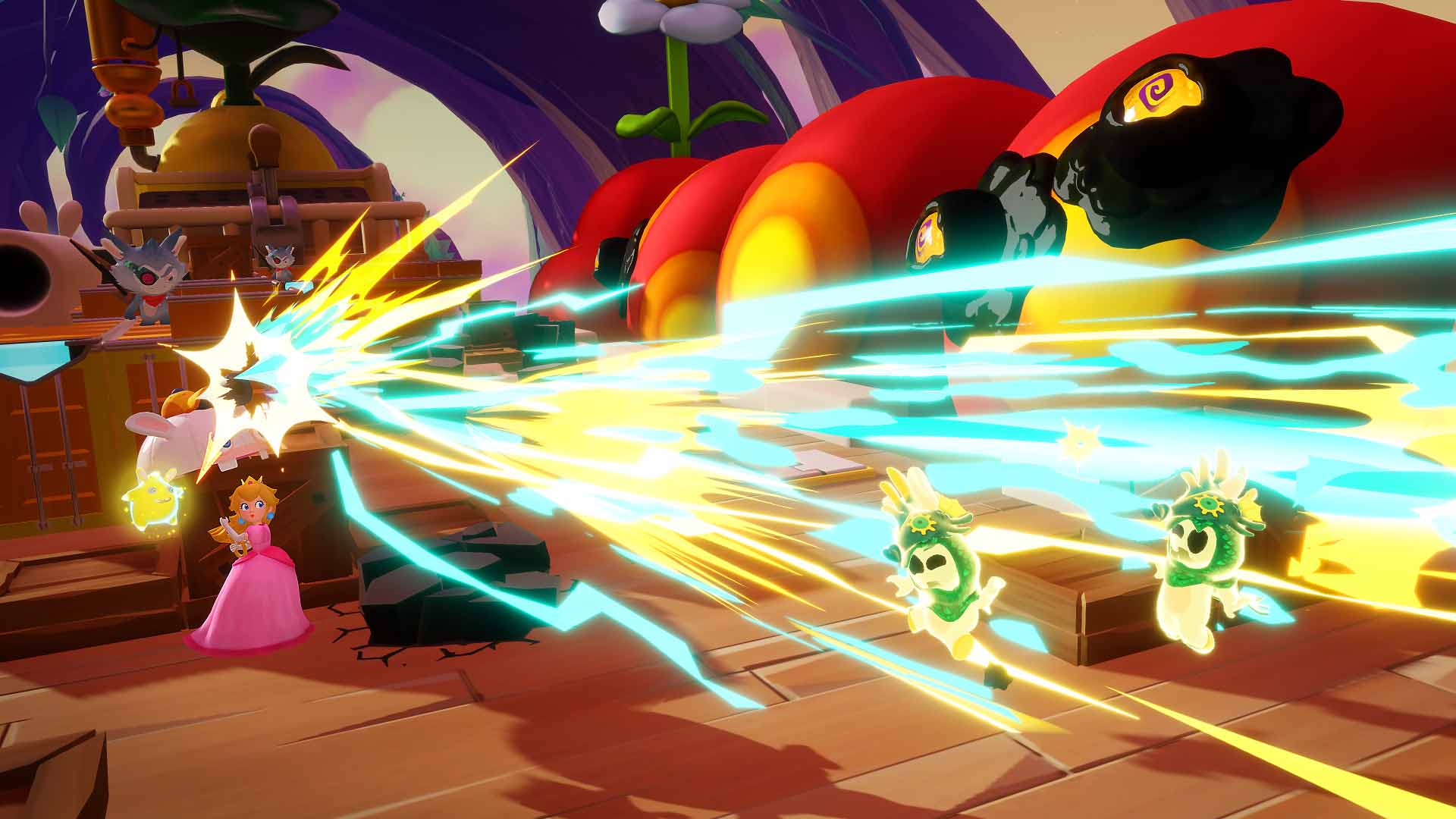Mario + Rabbids Sparks of Hope review
Mario + Rabbids Sparks of Hope is one of those sequels that improves on the original in almost every way. But it’s important to note that I said “almost”, there. The difficulty curve is far better than in Kingdom Battle, there’s a deeper, more interesting RPG system at the core, and overall exploration is just better. In fact, bar a few issues, it’s difficult to avoid saying that Sparks of Hope is pretty much a triumphant return of the Mario + Rabbids mashup that still seems like an impossible thing that even exists.
After the original game, in the Mario + Rabbids-verse, our Nintendo favourites seem to now happily coexist with their Rabbid counterparts. At no point does it stop becoming amusing hearing returning playable avatar Beep-O refer to them as “Rabbid Mario” or “Rabbid Peach”, and honestly, the Ubisoft creations continually steal the show, whether it’s Peach taking selfies and being a would-be influencer, or the (frankly) hilarious moment where Rabbid Mario decides the quickest way to get through a dark forest would be to burn it to the ground.

Anyway, some cosmic entity called Cursa arrives, bringing with it the titular Sparks of Hope, which end up being one of the core elements that makes this title stand out, and offer such customisation. Throughout the 25-30 hour experience (though there’s a lot more to do if you want to see and do everything, potentially double that number, actually) you will encounter different Sparks. Each one has an ability that is applied to your hero via the left or right bumper, along with a passive ability, too.
For example, you might use a pink one that heals you at the start of each turn, for three turns, which also boosts your base health as a passive. Maybe you want to equip a Spark that can buff your defence, or maybe you want lightning, gust, fire, or goo abilities to beat the enemies quicker. There are a few variations, meaning you can apply the status effects to weapons, or just do a status-based attack, like raining fireballs from the sky. The sparks are able to level up to a maximum of level five by feeding them star bits (like the Super Mario Galaxy ones), and doing so will increase the stats of the moves and passive abilities.
There are a total of 30 sparks to find across 5 and a bit large, open levels throughout the galaxy. Some are missable, some are essential, and some you’ll want to search up guides for how to unlock (like the one that turns your slide attack into a healing life-sucker one). Arguably some of them come too late in proceedings, and pacing is one of the largest problems that Sparks of Hope has, overall. You won’t even know you can revive downed team members until you’re nearly twenty hours in, which isn’t great.

A turn-based isometric experience, Sparks of Hope has upped the movement abilities of everyone who hits the battlefield for this sequel. With two action points, you’ll have to choose between support, attack, items, or spark moves, while you can do a team jump or slide attack for free.
Each hero has a skill tree which tends to scope towards their class type, so Mario and Luigi are best built around their “hero sight” ability (which is like the overwatch ability from XCOM, meaning you can attack when it isn’t your turn if an enemy target crosses your path), but some make incredible use of the free options. Newcomer Edge can eventually be upgraded to slide four times, and combined with the likes of an Electric Spark, means you can do incredible damage for free. Mario can use team jump to shoot from the skies, or even bounce on enemy heads to do damage, and even that can be boosted with upgrades to allow for two jump attacks.
It’s interesting to mix and match abilities and characters, and if there’s one thing Mario + Rabbids Sparks of Hope does better than almost any other hero-based tactics game, it’s making the heroes all feel vital. At first, you’ll think you’ve nailed your party, but the objectives for battles will cause you to change things up and reward you with understanding the heroes you might otherwise not use.

You see, while you will most regularly just have to defeat the enemies for a victory, there are some objectives that ask you to get to a certain spot. You can use your heroes like Rabbid Mario with major movement abilities, combining team jumps, extended move-options, and even items, and ignore the enemies to score a win. Likewise, Rabbid Luigi excels when it comes to objectives that require you remove Darkmess Eyes from objects as he can throw his boomerang and hit three things at once, making those objectives a breeze. Everyone is important, and of the nine heroes, there was only I felt I used sparingly.
Each of the islands you explore follows a pattern. You’ll need to find half of a seed in one part by completing battles, then somewhere else on the map do the same with the story missions to “finish” the island, and progress to the next one. At the start, each new island offers major changes, with new characters, or abilities for Beep-O that offer almost MetroidVania elements, allowing you to return to older islands and 100% them. But after the third new hero unlocks, and they start to just upgrade Beep-O abilities, the formula starts to wear a little thin.
The front-loading of new ideas comes at a bit of a cost when combined with the general speed of the battles, too. While Ubisoft has offered the chance to fast-forward turns, and make everything run at double speed, it’s still not fast enough. When you’ve gotten used to the mechanics and have your plans in place thanks to studying with the Beep-O Tacti-cam, you won’t really care about the enemy turn. So seeing them summon or cast, or move around pipes, then attack, feels largely superfluous.

But it doesn’t end there. The last unlockable hero is a very strong one, and became a mainstay in my party of three for much of the final third of the game. One of his moves sets off robotic bombs that walk towards the enemy until destroyed or contact is made. An upgrade to his skill tree lets you increase this from three to five walking mechas, and every time you cast, you have to watch the animation of them spawning then moving.
Elsewhere, hero abilities (like the aforementioned mechas, or Mario’s hero sight, etc) have a bespoke animation that is the same in hour one as it is in hour thirty. If you don’t switch them off in the menus, you’re a more patient man than I am, because even skipping them when they start becomes a chore after a while.
It’s worth noting that Mario + Rabbids Sparks of Hope also commits one of the cardinal sins of a turn-based game that you may or may not feel as strongly about as I do. The rules are set pretty early on regarding turns, movesets, and attacks, but the enemy can also summon whirling spawnpoints which not only spawn between 1-3 enemies (it’s never clear what’s coming), which seems harsh in some battles, but also the enemies who have just spawned can immediately move and attack. Almost any RPG worth its salt will allow enemies or friendlies to summon support, but it’s rare that it lets you move them immediately. Don’t be shocked if the AI decides to have three snipers summon from one portal only to have every one of them land an attack on your healer, Rabbid Peach, just because.
That said, elsewhere the islands themselves offer enormous exploration options. With red, blue, and green coin challenges that offer variety and a break from the fighting, optional puzzles that are fun to solves, or hidden areas that will reward you with a new Spark to try out. There’s plenty to do in Mario + Rabbids Sparks of Hope, but some of the creativity from the first game has been shunned in favour of a more formulaic approach.
Without meaning to sound a bit sour about it, the likes of the singing ghost battle of the previous title have been replaced by a checklist approach to things. Each island is fun to explore, but make no mistake, by the final area you will know what is coming, and that there will thing A, thing B, and thing C to do before thing D, E, and F unlock. It’s still a fun, witty, and clever title, but there’s definitely a propensity to not stray too much from the formula that’s been laid out, here.
But it’s only in the latter hours that you start to feel the ideas truly run out of steam, and combined with the general slow speed of battles, you have to wonder if a tighter experience could have resulted in one of the most enjoyable games of the year. Regardless, Mario + Rabbids Sparks of Hope is a fun, better balanced sequel, with clever ideas and bags of customisation and variety that make it an easy recommendation. This is a series I truly hope continues in the future, and despite a few bugs, it feels polished and looks better than it has any right to on the big screen.




